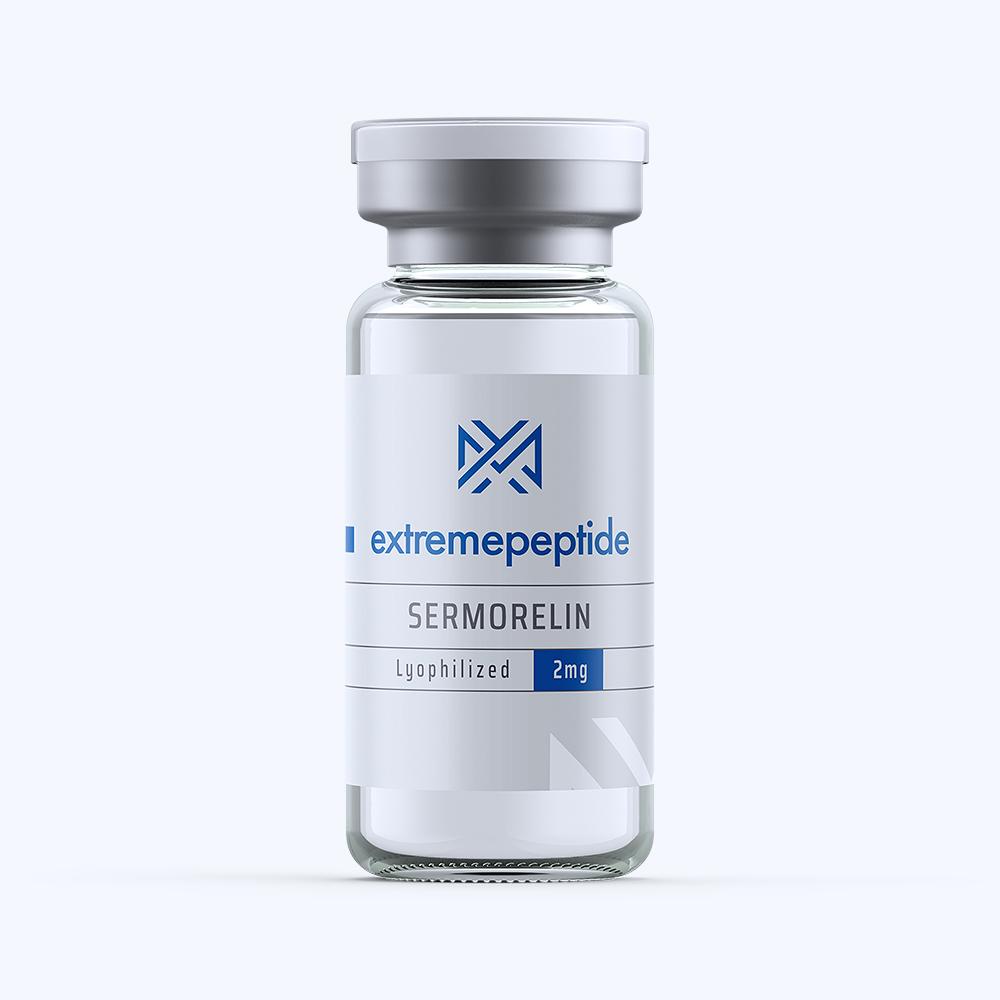
Sermorelin, also occasionally known as Geref, is a 29-amino acid polypeptide that is considered to be the shortest fully functional fragment of GHRH. It has a molecular mass of 3357.882, and it has a molecular formula of C149H246N44O42S.
Sermorelin at a Glance
According to scientific study that has been conducted on animal test subjects, it has been determined that the primary functionality of Sermorelin correlates with the relationship that it possesses with the pituitary gland. This is the pea-sized gland located at the bottom of the hypothalamus at the base of the brain that is responsible for the regulation and control of a wide array of endocrine system-related processes, including growth, metabolism, temperature regulation, sex organ functionality, and more.
Scientific study based on animal test subjects has determined that Sermorelin’s presence produces a stimulation of secretions related to muscular and skeletal tissue growth directly from the pituitary gland. This boost in secretions allows an animal test subject to achieve homeostasis regarding its muscular and skeletal tissue on a more efficient basis.
It should be noted that because Sermorelin works directly with the pituitary gland when it comes to stimulating specific secretions, its functionality is a little different than other peptides that are classified as GHRH. For instance, some peptides that land within the GHRH realm promote an increase in muscular and skeletal tissue growth by increasing the expression of IGF-1, or Insulin Growth Factor – 1, which is secreted by the liver. However, Sermorelin produces a means of muscular and skeletal tissue growth promotion directly through pituitary gland stimulation via the binding of specific receptors. The subsequent expressions that occur stem directly from the pituitary gland and not through a secondary agent. This direct link causes the process to be regulated by negative feedback that correlates to the inhibitory neurohormone somatostatin. Ultimately, this causation provides the animal test subject with a regulatory process that is more efficient and streamlined in nature.
Sermorelin and Functional Boosts
Because of the way in which Sermorelin operates in regards to the process of boosting the pituitary gland secretions that correlate to muscular and skeletal tissue growth, scientific study that has been conducted on animal test subjects has determined that the presence of the peptide could be responsible of a wide range of increased regulatory functions.
Some of these boosted functions include:
- Muscle and skeletal tissue growth – because Sermorelin has been shown to be directly linked to an increase in secretions from the pituitary gland relating to muscular and skeletal tissue, it is thought that the process of muscular and skeletal tissue growth can occur on a far more efficient means.
- Increased bone density – Because the presence of the peptide allows for a more efficient means of skeletal tissue growth, it is thought that the uptick in efficiency allows for bones to become stronger and sturdier. This could in turn make it easier for bones to withstand certain injuries such as breaks and fractures.
- The reduction of body fat – Because of the way in which Sermorelin operates, it is thought that the peptide causes an increase in the overall efficiency of protein synthesis. This boost in the process could be potentially linked to a more efficient means of breaking down adipose tissue – that is, body fat – in order to keep up with the elevated process. This not only could hypothetically lead to a burning off of excess body fat in animal test subjects, but it can also allow new adipose tissue to be burnt off quicker.
- And improvement in deep sleep – It has been determined through scientific study based on animal test subjects that the processes that relate to the functionality of the pituitary gland occur during deep sleep. Because of this, it is thought that the presence of Sermorelin causes a more efficient means of achieving deep sleep, so that the animal test subject’s body may be able to have sufficient time to properly handle the boost in protein synthesis.
Click here to read Sermorelin Part 2
Click here to view / download PDF


